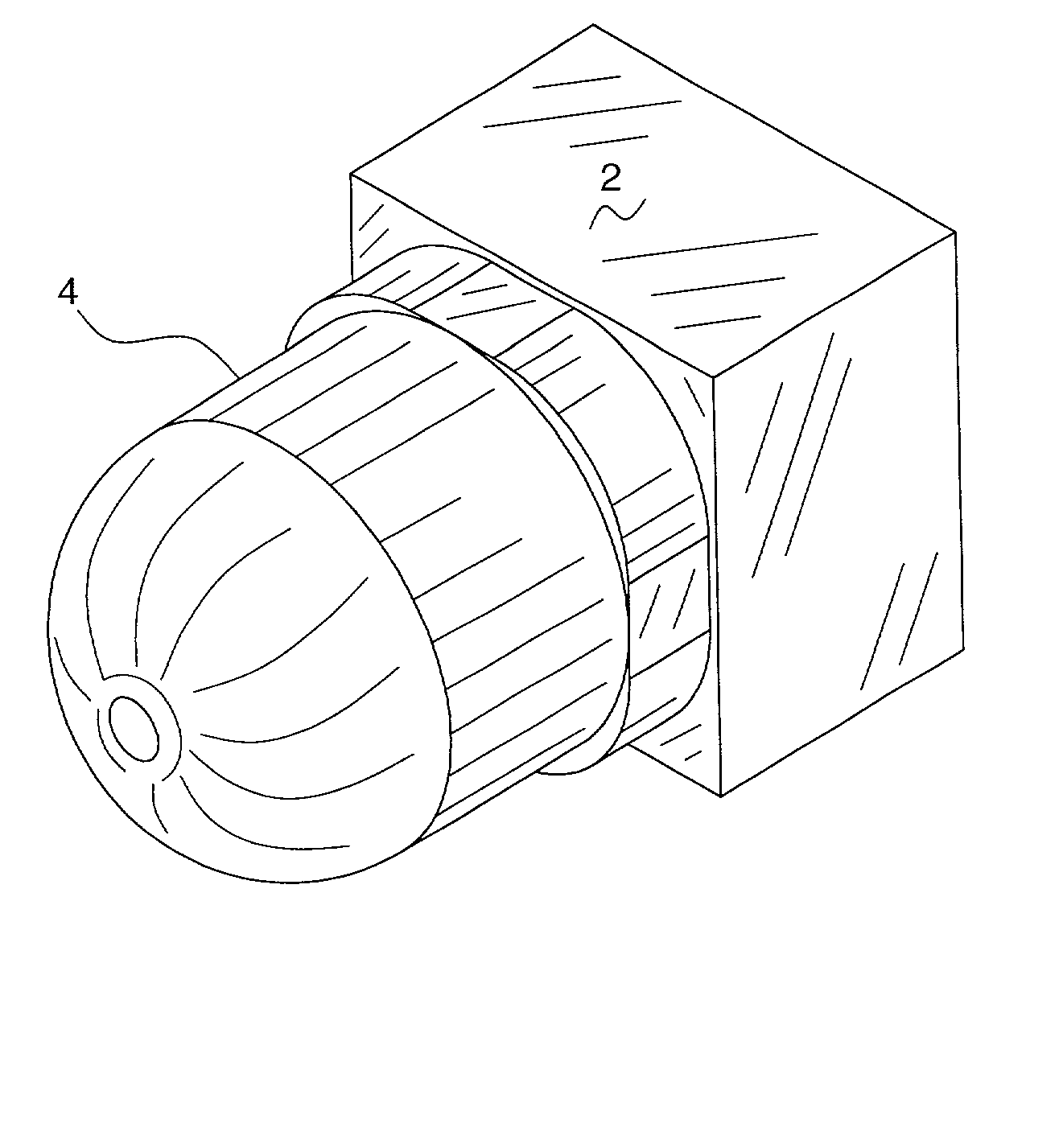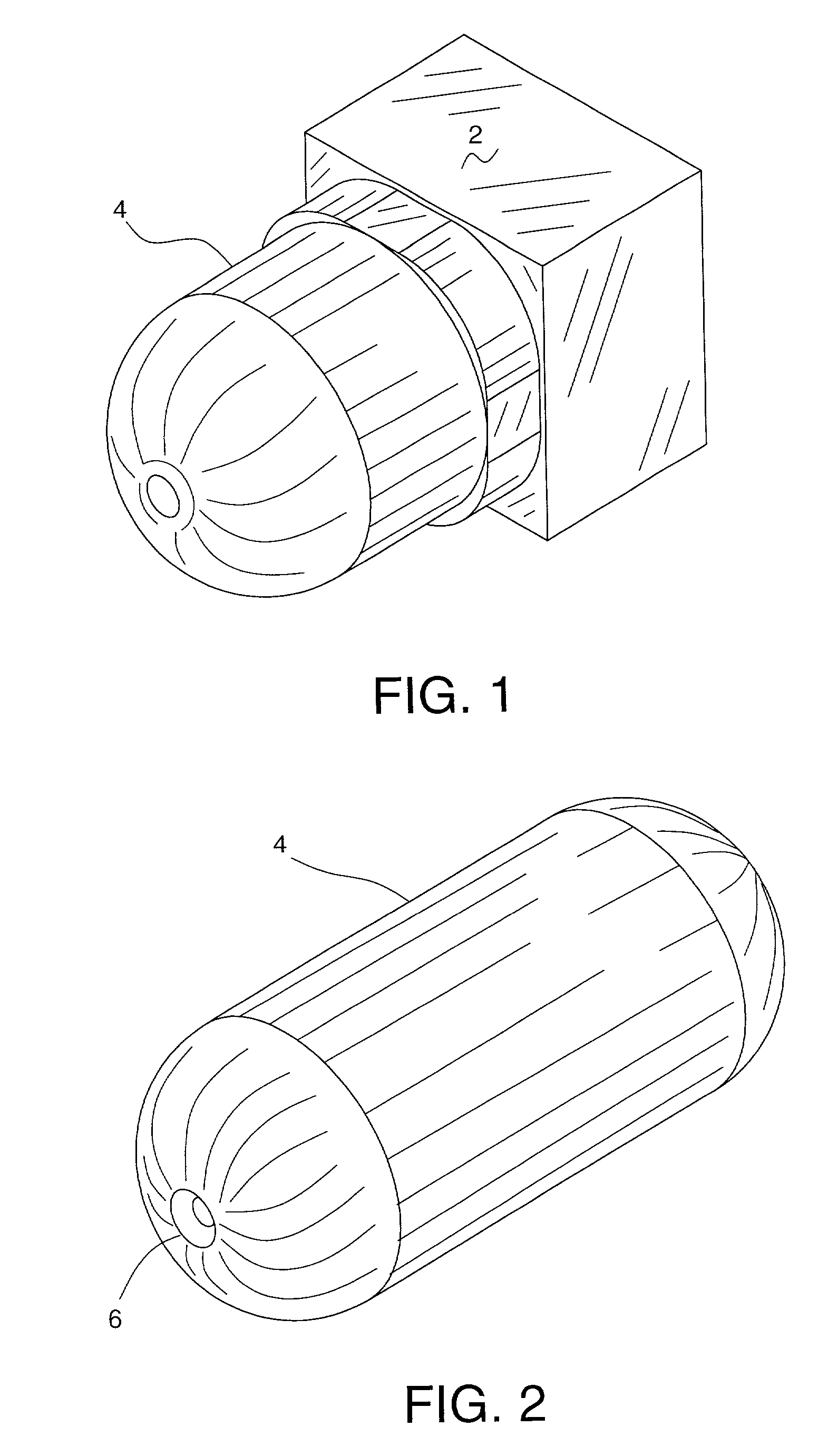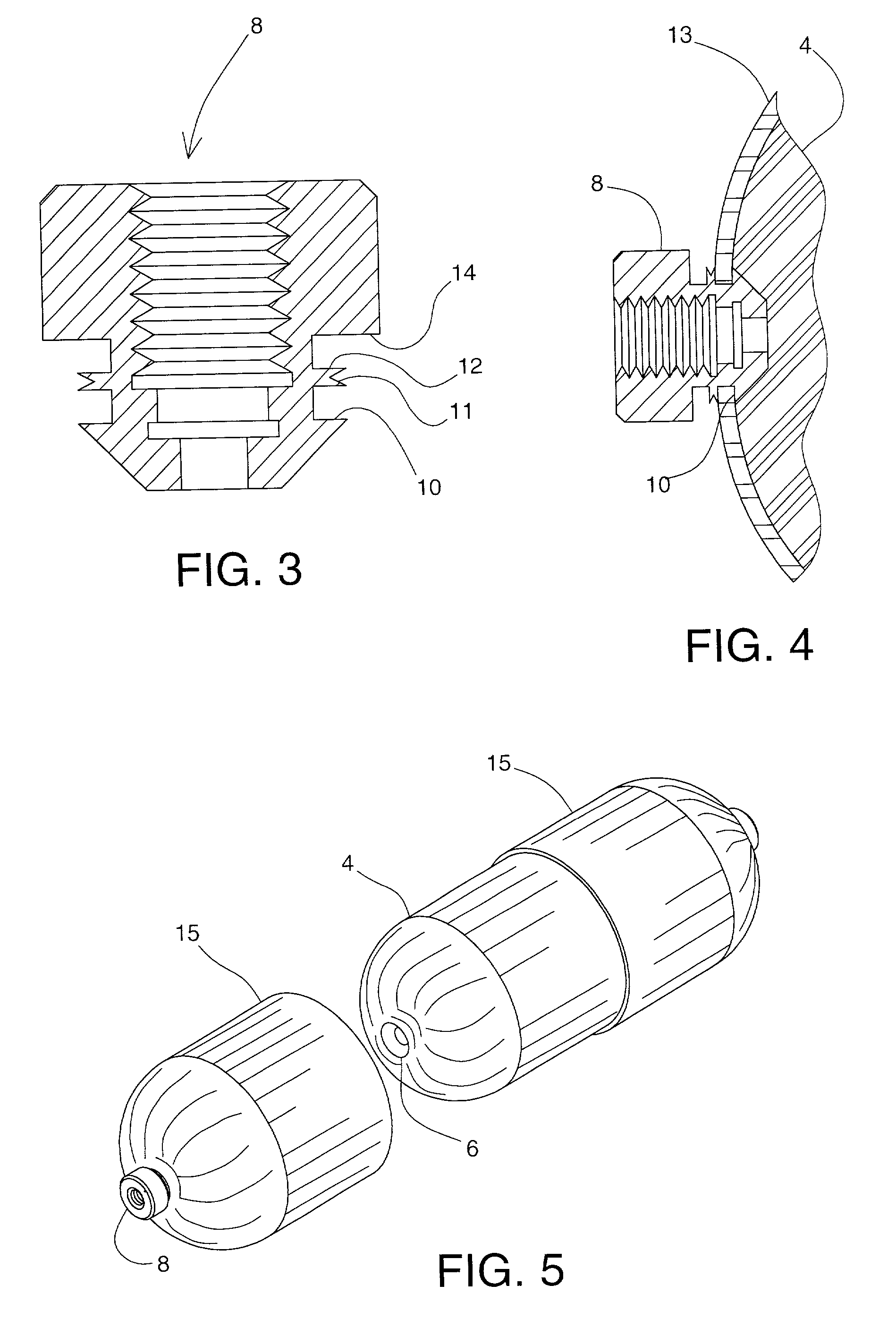Multilayer composite pressure vessel
a composite pressure vessel and multi-layer technology, applied in the direction of envelopes/bags making machinery, paper/cardboard containers, other domestic objects, etc., can solve the problems of pressure tanks, tooling costs, cost associated with molding means,
- Summary
- Abstract
- Description
- Claims
- Application Information
AI Technical Summary
Problems solved by technology
Method used
Image
Examples
Embodiment Construction
[0012] For a better understanding of the pressure tank fabrication method of the invention, and of the characteristics of pressure tanks made by the process, the techniques will now be described in conjunction with the following drawings.
[0013] FIG. 1 is an isometric view showing the fabrication of a mandrel.
[0014] FIG. 2 is an isometric view showing the mandrel of FIG. 1 with a recess for one of the tank fittings.
[0015] FIG. 3 is an enlarged cross sectional view of a tank fitting.
[0016] FIG. 4 is a cross sectional view showing a portion of the mandrel with a composite layer covering it and part of a tank fitting as an inner composite layer.
[0017] FIG. 5 is an isometric view showing the opening of the inner composite layer in order to remove the mandrel.
[0018] FIG. 6 is an isometric view showing the repaired inner composite layer following the removal of the mandrel.
[0019] FIG. 7 is a cross sectional view showing a portion the inner composite layer with a barrier layer deposited the...
PUM
| Property | Measurement | Unit |
|---|---|---|
| diameter | aaaaa | aaaaa |
| permeabilities | aaaaa | aaaaa |
| structure | aaaaa | aaaaa |
Abstract
Description
Claims
Application Information
 Login to View More
Login to View More - R&D
- Intellectual Property
- Life Sciences
- Materials
- Tech Scout
- Unparalleled Data Quality
- Higher Quality Content
- 60% Fewer Hallucinations
Browse by: Latest US Patents, China's latest patents, Technical Efficacy Thesaurus, Application Domain, Technology Topic, Popular Technical Reports.
© 2025 PatSnap. All rights reserved.Legal|Privacy policy|Modern Slavery Act Transparency Statement|Sitemap|About US| Contact US: help@patsnap.com



